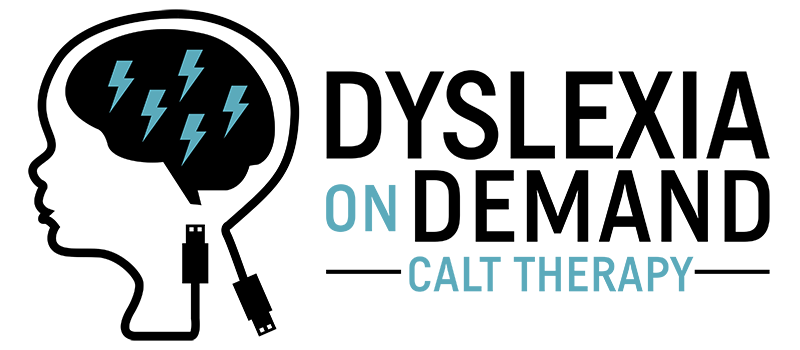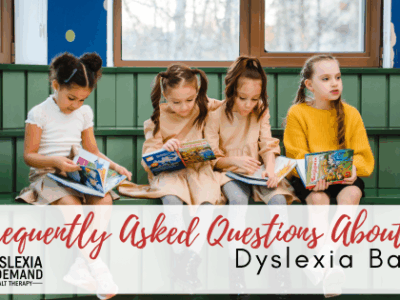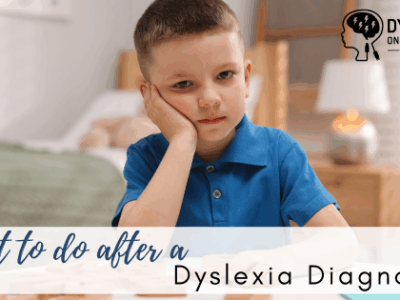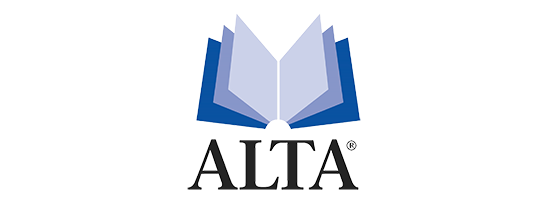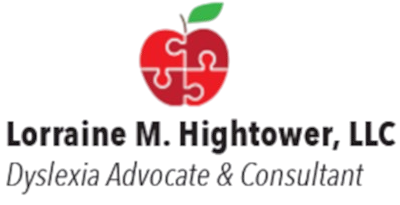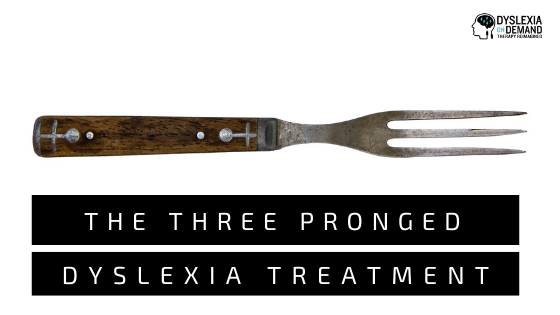
The Three-Pronged Approach to Dyslexia Treatment
Once receiving a dyslexia diagnosis, parents generally scramble to do two main things–once they deal with the emotional blow themselves:
- Cram and study up on dyslexia to learn more about their child’s brain and
- Line up some level of academic support for their children.
These are the natural steps and reactions and can be a commonsense approach as a parent. But, as we are learning more, I would love to throw in another approach to dealing with this problem head on.
- Academic Dyslexia Intervention
- Dealing with the Social Emotional Impact
- Instruction on Accommodations and Assistive Technology
I have been pushing this concept to parents for years, but heard it further reinforced recently at a conference presentation by Nancy Disterlic of the Region 10 Educational Support Center in Richardson, Texas.
Prong One: Academic Dyslexia Intervention
First and foremost, we need to attack the situation head on with the proper, explicit, systematic, multisensory, Orton-Gillingham based reading and spelling instruction that the dyslexic brain needs. When educating yourself on the intervention options that are right for you, please inform yourself of the differences between dyslexia tutoring verses dyslexia therapy. Also, please understand that simply employing a reading tutor, reading specialist, or center suck as Sylvan or Kumon will not be a successful remediation option for a child with dyslexia. Here is a clear explanation of the difference between intervention options:
While researching, please recognize that dyslexia intervention is not a quick fix. As a parent, you need to accept the fact that this is a marathon, not a sprint. Quality intervention programs require two full years, at minimum, for completion. I try for parents to equate this with braces you buy for your children. The difference is that they come out the other side with an essential life skill verses a cosmetic one.
Prong Two: Social Emotional Development and Acceptance
Dyslexia often takes a hard emotional toll on everyone that it impacts. And depending upon the age of your child when a diagnosis was received, the effect may be that much more pronounced. From a young age, school children with dyslexia are often hyper-aware of the academic differences from that of their non-impacted peers. Add the common comorbid conditions of ADD/ADHD and speech delays, and the sum of the all the impacts to negative self-concept is even greater. It is normal for children with dyslexia to feel dumb, even though research shows that they tend to have a higher IQ than their peers. Left unaddressed, compounded years of negative self-talk can amount to much greater problems than simply a struggle with reading and writing.
Talking openly about dyslexia with your child is paramount. Dyslexia should not be considered a secret or a dirty word that we don’t mention. If we never educate our dyslexia children about their different brain wiring, how will they ever know what creative thinkers and little geniuses they ARE! It is frequently said that individuals with dyslexia actually are blessed with amazing critical thinking abilities and that these are the skills our workforce will desperately need in the future. Children with dyslexia need to learn to own their differences and embrace their gifts, but that will never occur without the help of someone guiding them in that direction. Just as a start, the internet has an endless number of videos about dyslexic superpowers geared at both parents and adults. Fertilize these children’s self-images and you will see them blossom!
The more a child embraces their dyslexia, the greater chance they have in the future to advocate for their needs and their afforded accommodations as they rank up through their years in school, higher education, and beyond.
Prong Three: Accommodations and Assistive Technology
Accommodations and assistive technology are the ramps and the crutches of the dyslexic world and such supports should never be considered as “cheats.” Would you ever see a wheelchair as an “unfair advantage” for a handicapped individual? Clearly the answer is no. Academic accommodations and the use of assistive technology should be placed in the same “field leveling” category.
Accommodations
As it applies to the world of education, parents, teachers and administrators need to remember that less apparent, hidden disabilities are just as impactful as physical disabilities in our children. Although they lack the visual cues of children with more apparent physically handicapping conditions, the disabilities that invisibly lay under the surface can be just as detrimental. They need to be remembered.
As a piece of an educational plan for dyslexic children, necessary accommodations need to be documented and utilized. Examples of such accommodations are teacher provided notes, frequent check ins, not penalizing for spelling and grammatical errors, and multiple ways to prove understanding. These should be individually developed and specified by the student’s Special Education or 504 committee, with the parent included, and documented. Furthermore, it is essential that teachers see them as more than just information in a file and instead a daily “crutch” to be used to assist that child. Children need to be aware of the accommodations to which they have access and be taught the ability and confidence to execute on them when the teacher forgets.
Assistive Technology
Welcome to 2021. All of us use assistive technology daily! Do you use speech to text on your phone or to draft emails? Do you rely on Alexa or Siri to help answer your questions? Do you allow GPS to navigate you to your destination? Of course you do, because we ALL do! And is it not true that the more we learn HOW to utilize these tools the more we rely on them? Assistive technology is our present and our future, and sad to say, but we will be utilizing these tools more and more to replace our literacy skills in the future.
This is great news for individuals impacted by dyslexia. When you remove their “barricades,” they can express their brilliant ideas without limitation! But like anything, you must walk before you run, and this means that it isn’t enough for the technology to simply exist. Dyslexics require instruction on not only what options are out there, HOW to use them, and opportunities to practice their use. When developing a plan for these kids’ assistive technology, it isn’t enough to simply write them into the IEP paperwork, but a pledge by parents and teachers alike for such instruction is essential.
When carefully planning out treatment for your loved one with dyslexia, it is important to remember the WHOLE CHILD requires attention and not just the academic one.
